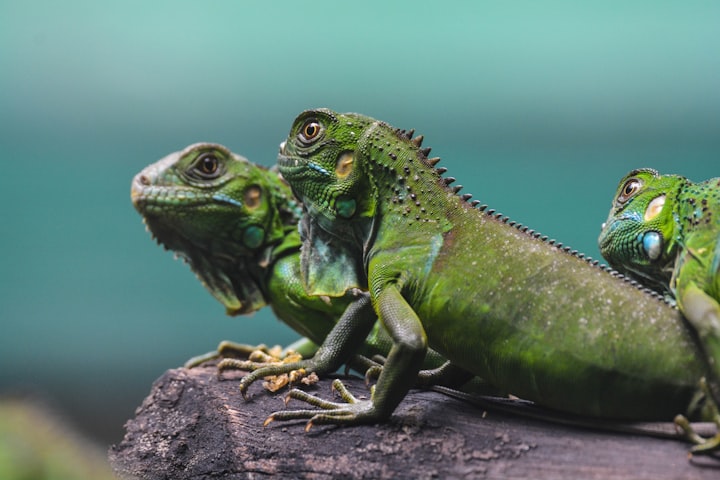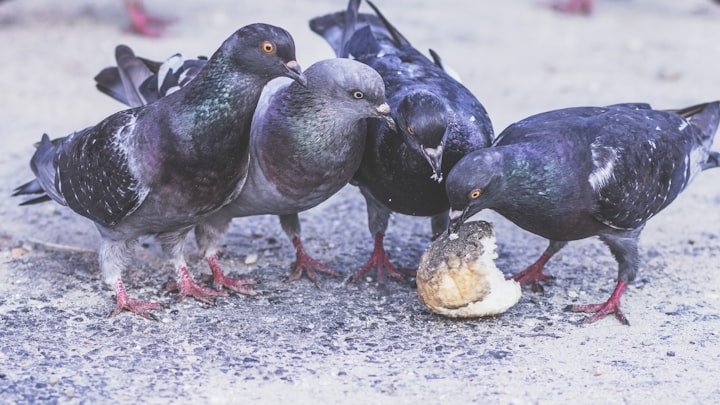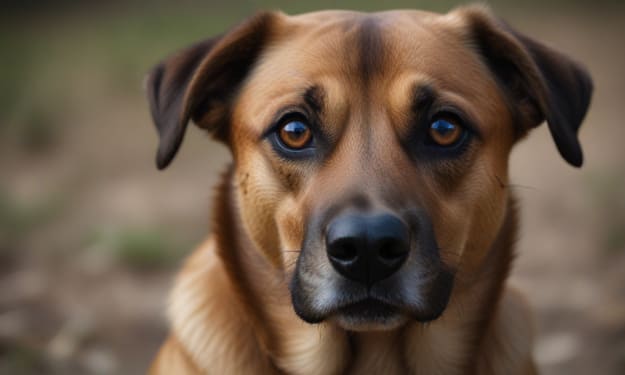Unprecedented evolutionary speed
In just 40 years, wall lizards go from carnivore to vegetarian

Italian wall lizards have made a decision that goes against their ancestors, they are going vegetarian!
Some may say what's wrong with being a vegetarian? People can also not eat meat to convert to vegetarianism.
It is important to know that animal vegetarianism is not the same as human vegetarianism. Humans can regulate their nutrition, so even vegetarianism is not a threat to survival.
The food habits of animals have evolved over a long period, so how can they change just like that?
But the Italian wall lizard has done it!
It took 40 years to complete the change of food habits, and Darwin's coffin board could not be pressed!
The Italian wall lizard is a vegetarian
The Italian wall lizard is a small lizard living in the Mediterranean Sea, with a pocket-sized body, only 13 cm from its head to its tail.
Although it is small in size, it is a pure carnivore, feeding on various insects.
Incidentally, its favorite insect is the cockroach.
The Italian wall lizard has a strong reproductive capacity, so it is also used as a pet in many countries in Europe and America, with a slim, cute body.
It is also because of the large number of Italian wall lizards that many experiments on lizards have used it as a research object.
In 1971, a group of American biologists brought 10 Italian wall lizards to the island of Pod Makarou in Croatia.
These 10 little guys were 5 males and 5 females. As a result, the war in Croatia was not expected and the biologists had to evacuate, because, of the hasty retreat, these Italian wall lizards were left on the island.
Time passed 40 years, and the biologists involved in the experiment back then remembered that something had been left on the island, so they rushed back to check the situation.
Unexpectedly, they were surprised by the situation on Pod Makarou Island.
The 10 Italian wall lizards had bred thousands of offspring, and they seriously squeezed the survival space of the island's native lizards, Dalmatian wall lizards, in just 40 years, the native lizards died.
The biologists expressed great guilt for their carelessness back then, which had destroyed the local ecology.
But as they continued to observe, they surprisingly found that all the Italian wall lizards on the island had become vegetarian!
Evolution and vegetarianism
Animals that eat meat and vegetarianism do not change in a short time.
In terms of biological evolution, the emergence of vegetarian behavior in vertebrates goes back to the Permian period.
So, vegetarianism and meat-eating have been separated for at least 250 million years. Except for omnivores, it is difficult for other animals to seamlessly switch between meat-eating and vegetarianism. Even if they wanted to, the animal's gut doesn't want to.
Vegetarian animals, digest the cellulose of plants, that is really what tricks have evolved.
The most desperate ones are the ruminant suborder represented by cattle and sheep, which, to digest plants, expanded their esophagus with three stomachs, and then combined with their original stomachs to have four stomachs.
In this way, they can put the plants into the stomach to ferment, then vomit out and chew, and then finally let the intestines fully absorb.
So cows and sheep eat so much grass that the poop they pull out has no fiber inside.
In other phytophagous animals, there is no way to digest the plant from the perspective of a magical attack, then digest it physically, growing their intestines, especially the cecum, so that the plant stays in the stomach as long as possible and let it ferment fully.
Thus we will find that phytophagous animals grow a big belly because it is stuffed with intestines.
The process of vegetarianism is the emergence of food habits through natural selection over a long period, not a million years but a million years.
First of all, the animal needs a genetic mutation, such as the growth of another stomach, intestinal tract becoming longer, etc.
The second is to face natural selection, such as regurgitation of this eating habit was selected about 30 million years ago, because at that time the earth grew grass.
If a meat-eating animal wants to go vegetarian, it cannot overcome the hurdle of digesting cellulose.
For example, the panda, which has existed for 8 million years, still cannot digest cellulose completely, and its feces can be used to make paper.
However, the Italian wall lizard ignored this rule and spent 40 years completing its vegetarian diet.
Biologists caught the Italian wall lizards on the island and dissected them, and found that the bodies of this group of lizards had surprisingly changed.
Their intestines had grown longer over 40 years, about 5% longer than their counterparts in the Mediterranean.
In addition to the lengthening of the intestines, they had also developed telencephalic flaps on their intestines.
This is a muscle group in the intestine that is used to control the speed of intestinal peristalsis and change the structure of the digestion rate.
Phytophagous animals need to digest fiber, so the intestine is long, and this is a physical change made by Italian wall lizards in response to their food habits.
In addition to growing new structures, the intestinal flora of the Italian wall lizard has also changed.
Biologists comparing Italian wall lizards on Pod Macau Island with members of their old home in the Mediterranean found that the island lizards had more microorganisms in their intestines that helped digest plants, while those that had helped digest insects either became less numerous or somewhat disappeared.
The Italian wall lizards have changed not only in their guts but also in their appearance; the island lizards have become shorter on their hind legs and have become less able to climb.
Because insects are hard to obtain on the island, but plants are everywhere, and because there are no natural predators on the island, the Italian wall lizard here gradually does not need to be busy running around.
Moreover, the Italian wall lizards on the island have started to live in groups!
Originally, Italian wall lizards were solitary animals, and they had to fight to the death for one insect, so they divided their territories.
But on Pod Macau Island, there is no need to fight over eating plants, as they all have something to eat anyway.
So, the Italian wall lizard's temperament became milder after coming to the island.
How did the Italian wall lizards accomplish in 40 years what other animals could not accomplish in 400,000 years?
Biologists speculate that there are three reasons for the rapid evolution of Italian wall lizards.
The first reason is the anthropogenic factor. Originally, they would never come to an island that is not even close in their lifetime, but humans brought them here.
This is tantamount to putting them in a situation where their environment has changed dramatically and they face life or death.
The second reason is that inbreeding has accelerated the rate of genetic mutation.
There are about 5,000 Italian wall lizards on the island, and they are the offspring of five pairs of lizards, and inbreeding is bound to occur in the process.
Both pairs likely carry genes that promote vegetarianism, and this combination results in vegetarian offspring that happen to be very well adapted to the island's environment.
So instead of being eliminated, this inbred offspring will flourish.
The third reason is that Italian wall lizards reproduce very fast, and in 40 years, they have enough time to reproduce to 37 to 41 generations.
Plus there are inbreeding plus buffs inside, resulting in their adaptation time to vegetarianism being drastically shortened.
With the addition of these three reasons, Italian wall lizards gradually change to vegetarianism against their ancestral rules.
The change of the Italian wall lizard is not bouncing on Darwin's coffin, rather, it is more evidence that the evolution of animals is about adapting to their environment.
An adaptable species like the wall lizard can get a foothold in such a huge environmental change.
There are many examples of wall lizards that have rapidly changed their original characteristics, such as the Manchester moth in England.
Some 100 years ago, Manchester was an industrial city where black smoke from factories filled the walls of the city.
A local moth, their color changed from white to grayish-black because it was easier to hide with this.
For about 100 years, the moths were essentially gray-black, and instead white became the outlier.
Because of the white moths, they were caught and eaten by birds, some of them even too late to leave their offspring.
This shows that human beings are too capable of changing the living environment of animals, either because of industry or just put it somewhere else.
Animals with weak adaptive capacity must not be able to adapt to such changes, and went to extinction.
But animals with strong adaptive capacity, such as Italian wall lizards and Mantis moths, quickly adapted to this change and saved themselves from extinction.
About the Creator
Richard Shurwood
If you wish to succeed, you should use persistence as your good friend, experience as your reference, prudence as your brother and hope as your sentry.






Comments
There are no comments for this story
Be the first to respond and start the conversation.